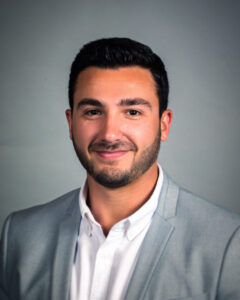 Location
Location
St. Louis, Missouri
Population
318,000
Featured By
Adam Goldberg
Their Story
I arrived in STL back in 2016 in order to attend graduate school at Washington University in St. Louis. By that time, I had spent the first two years of my professional career post-undergrad working in a traditional architecture firm in my hometown of Chicago. I chose Wash U because of its reputation as a top program, as well as its location within a major city. During my two and half years in grad school I grew to truly love what STL had to offer — it had become a welcome respite from the chaos of Chicago. The relaxed pace and friendly vibe of this town are direct reflections of the people who call it home. Throughout grad school, my involvement with the city and it’s deeper qualities bonded me to the city in a way that made me want to stay.
What sort of job opportunities are available?
St. Louis has a metro area of over two million people, so it has plenty to offer at the professional level. Beyond that, the geographic location of this city has long established it as an epicenter and gateway for regions beyond just the midwest. As a result, STL can offer the full spectrum of opportunities for a design professional. From the locally-focused boutique firms to those with offices around the world – and everything in between – this city has them all. The work being done within the boundaries of the STL metropolitan area alone is profound. The ability to make both immediate and lasting impacts within your own community was a tremendous draw for me in choosing to stay after graduation.
Tell us a little about your internship and exams. What were your successes/failures?
I made a concentrated effort to use my various internships and roles prior to finishing grad school to see as many facets of the architecture and construction industries as possible. From time spent in a high-end residential design-build office, to military base master planning, to affordable housing and senior living design, I wanted to diversify my experiences while I could. While I am just now preparing to start my exams, I am glad that I have been able to finish my AXP hours first. While I have heard stories of young professionals struggling to obtain hours in areas such as site planning and construction administration/observation, my variety of roles allowed me to promptly check those off my list.
How did you overcome your failures (if any) with the ARE/AXP?
I have yet to encounter any real roadblocks or failures on my path to licensure. However, I am bracing for the looming reality of getting back into the mentality of studying for the AREs – and studying was never my strong suit. Looking on the bright side though, I am staying hopeful that my wide ranging experiences in both the professional setting and in academia will provide me with a solid foundation (hey look, a building pun!) for the exams to come.
What kind of firm support did you have for the licensure process?
While I am currently in a small firm with fewer resources than are provided to some of my peers in larger settings, I have already started to bombard my fellow young coworkers who have begun their examinations with questions and asking for advice. I am grateful to be in an office that is a tightly knit group of people who are more than willing to share their own stories of success and failure that can help me along my own path. Beyond that, our office provides reimbursement for the cost of exams – something I was thrilled to learn of.
What is the social scene like?
In St. Louis, we like beer. A lot. So much so that our water infrastructure exists in its state largely due to Anheuser Busch having it installed. As a result, our social scene (at least as I’ve lived it) is based around which ever brewery you choose to hang out at that day or night. Outside of the vast selection of breweries and bars, every distinct neighborhood has something intriguing or entertaining to offer.
How did you manage to make friends the first few months?
As I mentioned, I arrived in this city to start grad school. Thanks to that, my circle of friends arose from the bonds I formed quickly with my classmates at Wash U. Luckily for me, a handful of those friends chose the same path as me and stuck around STL after graduating. Additionally, as any other major city, there is no shortage of professional groups based around networking and experiencing the town.
How did you find your apartment?
Once again, I can thank Wash U. I found my apartment from a classmate who had been renting the first floor of a 1900’s duplex on a beautiful street who needed to sublet it when he and his wife bought a house elsewhere in the city. That was three years ago, and I still call that apartment home to this day! There are no shortage of amazing apartments, many in historic 2-4 story brick buildings, across this city.
What is your favorite part about St. Louis?
Remember Goldilocks and the Three Bears? To me, St. Louis is “just right.” It’s not too big – nor too small. It’s not too hectic – nor too boring. I loved my time in Chicago, but living here now… I rarely miss it. As we say here, “you can get anywhere in 15 minutes.” The city, and it’s people, have this southern charm to them, while still being a good ol’ midwest town. My favorite part about this city is the feeling I get when I return from traveling just about anywhere else. Coming back feels like home, and that’s why I’m still here.
This month, ‘I Want to Work In’ is sponsored by PPI, A Kaplan Company, the Preferred ARE Prep Provider of the AIAS.
Looking to venture to a new city after graduation? Stay tuned each month as we highlight a new city. Want to feature your city? Send an email to mailbox@aias.org.











